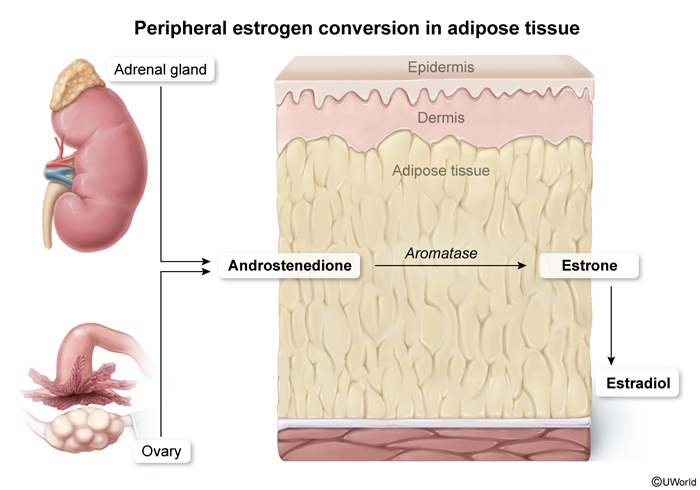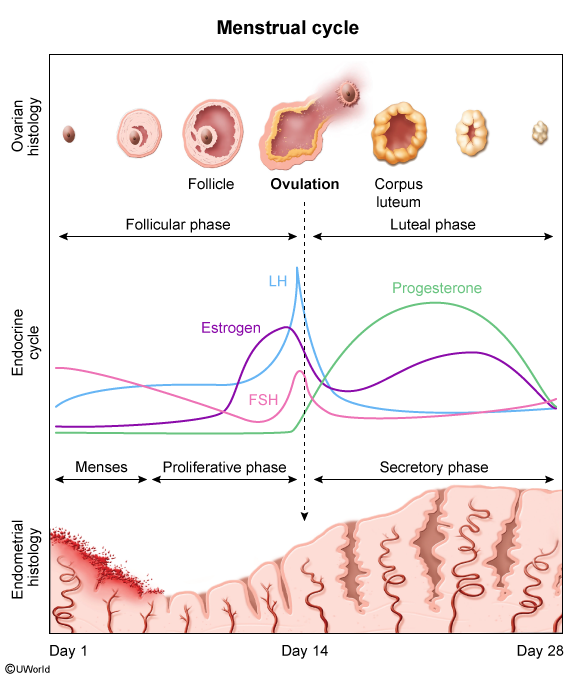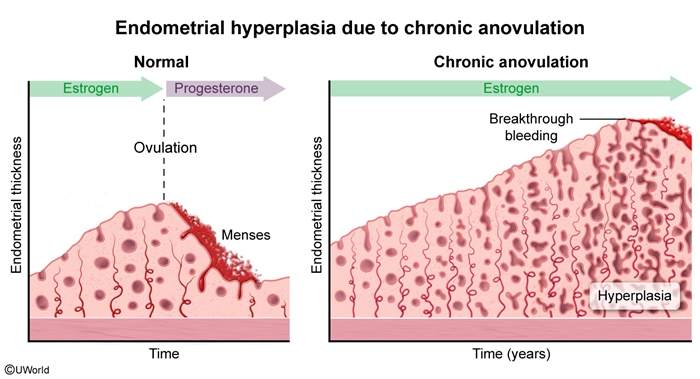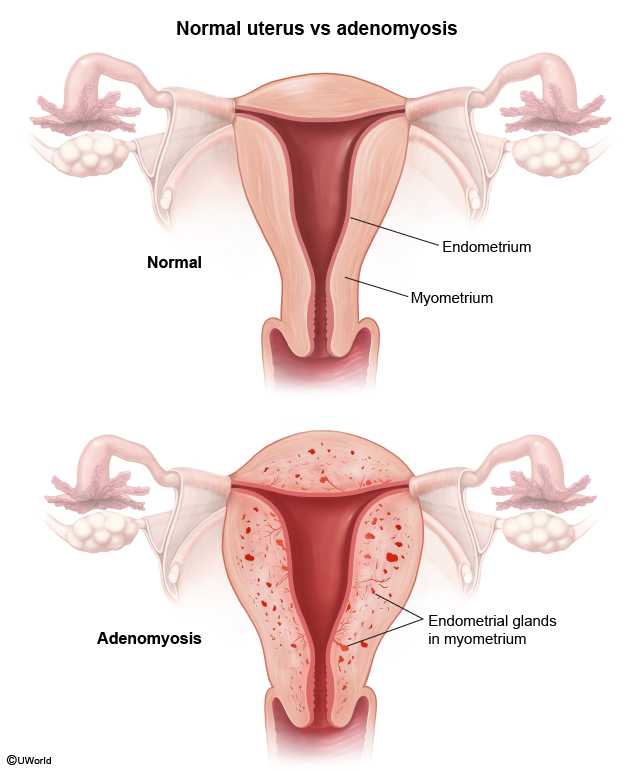Endometrial Cancer
Article Sections
Introduction
Endometrial cancer is a common gynecologic malignancy that primarily affects women of late reproductive age and postmenopausal women. It typically presents with either abnormal uterine bleeding (AUB) or postmenopausal bleeding (PMB).
Pathogenesis and risk factors
Endometrial hyperplasia and endometrial cancer arise from the epithelial lining of the uterine cavity. Unopposed estrogen plays a critical role in the development of endometrial hyperplasia and the most common subtype of endometrial cancer through its proliferative effects on the endometrial lining. Estrogen is produced at 2 different sites within the body via the enzyme aromatase: the ovaries (which convert androgens to estradiol in the granulosa cells) and adipose tissue (which converts androgens to estrone) (Figure 1).
During a normal menstrual cycle, estrogen stimulates the growth of the endometrium in the first half of the cycle (
Continue Learning with UWorld
Get the full Endometrial Cancer article plus rich visuals, real-world cases, and in-depth insights from medical experts, all available through the UWorld Medical Library.
Figures



